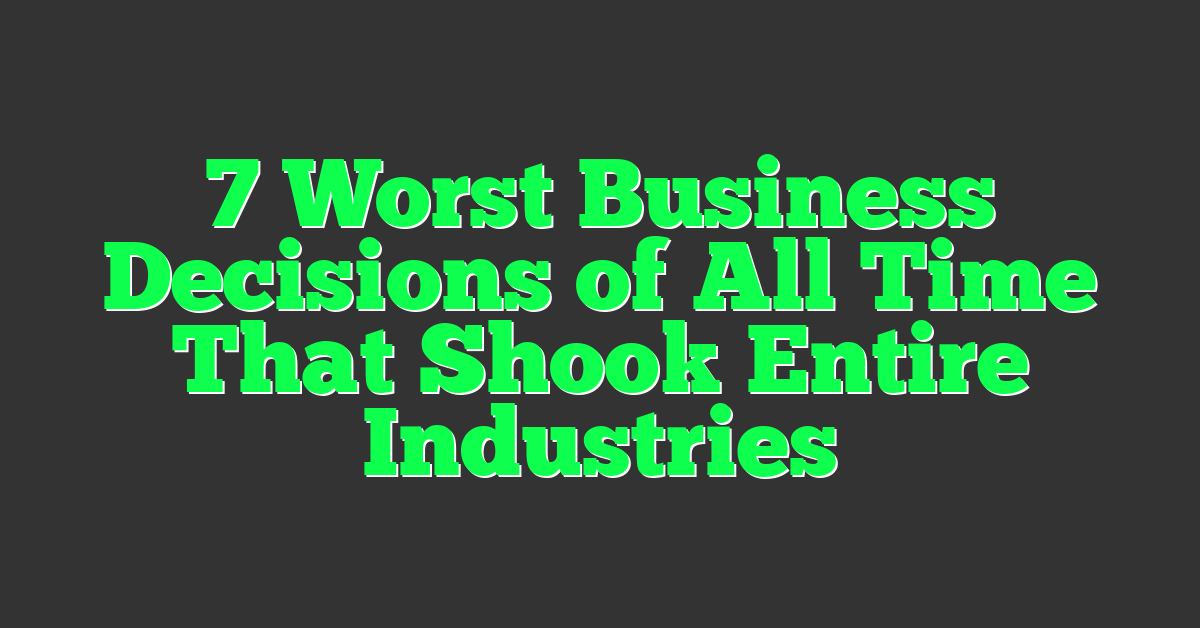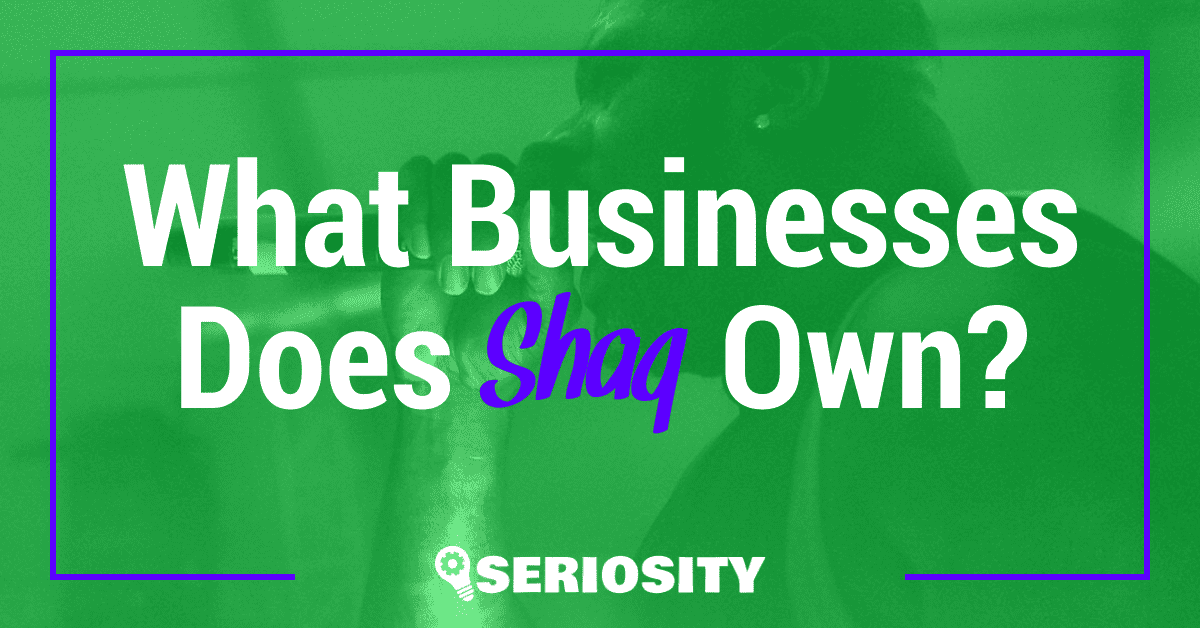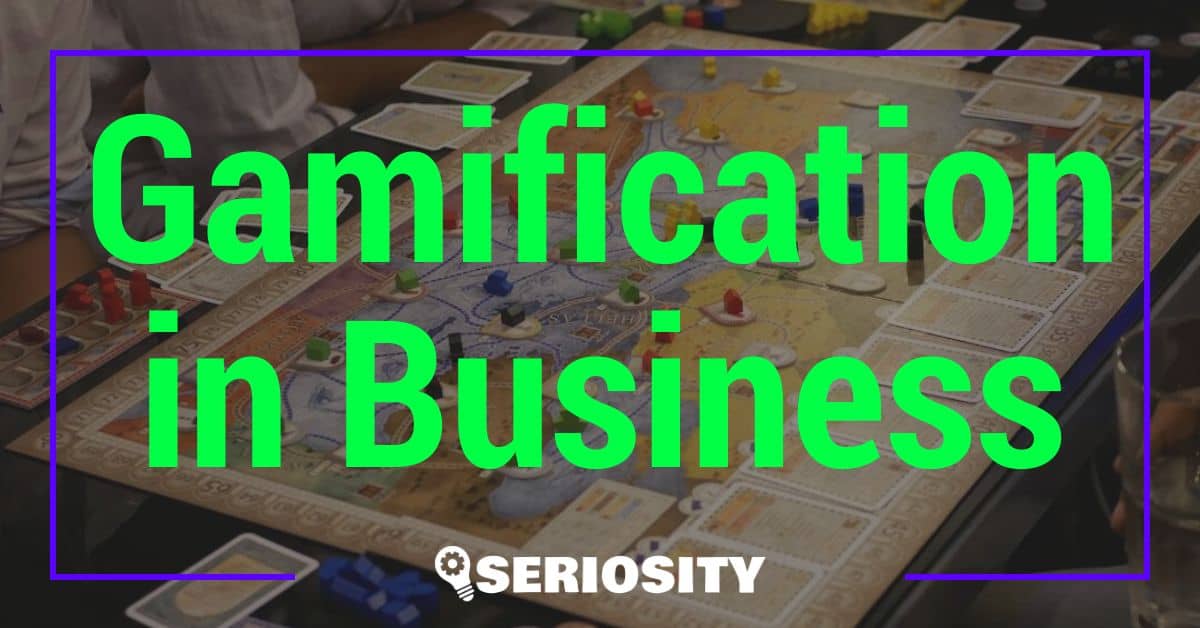Ever wonder how some of the biggest companies could make colossal mistakes? You’re not alone. Even the most successful businesses have stumbled, making decisions that left everyone scratching their heads. From missed opportunities to outright blunders, these choices have become cautionary tales in the business world.

In this article, you’ll discover seven of the worst business decisions of all time. These stories aren’t just fascinating—they’re also packed with valuable lessons. So, buckle up and get ready to explore some of the most jaw-dropping missteps in corporate history.
Key Takeaways
- Understanding Historical Business Missteps: Learning from infamous blunders like Coca-Cola’s New Coke and Kodak’s delay in digital photography adoption can provide crucial lessons in market research, customer loyalty, and adapting to technological changes.
- Tech Industry Missed Opportunities: The cases of Excite turning down Google and Yahoo undervaluing Facebook highlight the importance of recognizing the potential in innovative startups and emerging technologies.
- Retail and Branding Cautionary Tales: JC Penney’s rebranding failure and Blockbuster’s refusal to buy Netflix underscore the significance of aligning business strategies with customer expectations and market trends.
- Criteria for Bad Decisions: Evaluating the magnitude of impact, lost opportunities, and long-term effects can help understand the repercussions of poor business decisions and extract valuable lessons for future ventures.
- Adaptation and Innovation: The common thread in these stories is the critical need for businesses to stay adaptable and open to innovation to avoid similar pitfalls.
Exploring the 7 Worst Business Decisions of All Time
Even the most successful companies stumble, leading to missed opportunities and major blunders. These stories are both fascinating and packed with valuable lessons. Let’s dive into some of the most notorious business decisions that had massive consequences.
Overview of Business Missteps
Businesses, especially startups and online ventures, often make decisions under pressure. Poor market research, ignoring customer feedback, or resisting change can lead to significant failures. For instance, Blockbuster passed up the chance to buy Netflix for $50 million in 2000, dismissing the future of streaming. These decisions often serve as cautionary tales that every entrepreneur can learn from.
Criteria for Selection
To identify the worst business decisions, criteria include the magnitude of the impact, the lost opportunities, and the decisions’ long-term effects on the companies involved. Decisions like Kodak’s refusal to embrace digital photography, despite having invented it, highlight missed opportunities that could’ve altered the industry’s landscape. By examining these criteria, one can better understand the repercussions and extract critical lessons for future ventures.
Historic Business Blunders
Even the largest companies make monumental mistakes. These blunders often offer valuable lessons for budding entrepreneurs and seasoned business owners. Let’s explore two infamous decisions that are discussed time and again.
The New Coke Fiasco
In April 1985, Coca-Cola made one of its most regrettable decisions by changing its century-old formula. The New Coke aimed to compete with Pepsi, hoping to capture a younger audience but, instead, it alienated Coca-Cola’s loyal customer base. What made this decision even more baffling was that market research had shown that the original formula had a strong following. The backlash was so severe that Coca-Cola had to revert to the original formula just 79 days later, branding it Coca-Cola Classic. This incident underscores the importance of thoroughly understanding customer loyalty before making drastic product changes.
Kodak’s Digital Photography Delay
Kodak’s hesitation to embrace digital photography stands as a classic case of missed opportunity. Ironically, Kodak invented the first digital camera in 1975 but feared it would cannibalize its film business. By the time Kodak fully invested in digital photography, competitors like Canon and Sony had already dominated the market. This delay not only cost Kodak billions but also led to its eventual bankruptcy in 2012. Kodak’s story serves as a powerful lesson on the dangers of resisting technological change and the importance of adapting early to emerging trends.
Tech Industry Misjudgments
As an entrepreneur, you’ve likely encountered decisions that test your judgment and foresight. In the tech industry, some misjudgments resulted in massive missed opportunities.
Excite Passes on Google
In 1999, Excite had the chance to buy Google for $750,000. Larry Page and Sergey Brin, Google’s founders, offered the search engine to Excite, but the CEO turned it down. Google then revolutionized search technology, now valued at over $1 trillion. Excite missed aligning with a transformative product, losing its market relevance eventually.
Yahoo Declines to Buy Facebook
In 2006, Yahoo had the opportunity to buy Facebook for $1 billion. Mark Zuckerberg, Facebook’s CEO, was open to the deal, but Yahoo’s declining stock price led them to offer $850 million. Zuckerberg rejected this offer, and Facebook’s value skyrocketed. Yahoo’s decision to undervalue the social media platform cost it a significant foothold in the tech industry. Today, Facebook boasts over 2.9 billion active monthly users and is a major player in digital advertising.
In these cases, it’s evident how crucial it is to recognize the potential in innovation and emerging trends. Never underestimate a startup’s long-term potential, no matter how small it seems.
Retail and Branding Disasters
Understanding retail and branding disasters helps you navigate the complex world of business. These missteps highlight the importance of market strategy and customer understanding.
JC Penney’s Branding Overhaul Failure
JC Penney’s drastic rebranding in 2011 alienated loyal customers and confused new ones. When Ron Johnson took over as CEO, he ended discounts, sales, and coupons in favor of “everyday low prices.” This change disregarded customer shopping habits. Shoppers, who loved hunting for deals, left in droves.
By 2013, JC Penney had reversed its strategy but lost billions. Its stock plummeted from $42 per share pre-2011 to $16 post-rebranding. This case underscores the need to align branding strategies with customer expectations and habits.
Blockbuster Declines Netflix Deal
Blockbuster had the chance to buy Netflix for $50 million in 2000. At the time, Netflix was a DVD rental service looking for partners. Blockbuster’s CEO, John Antioco, dismissed the offer, considering it a niche market.
Fast forward to 2010, Blockbuster had filed for bankruptcy while Netflix grew into a streaming giant. By Q2 2020, Netflix had over 193 million subscribers globally. This decision shows the risks of underestimating emerging markets and the importance of adapting to technological shifts in the industry.
Recognize these retail and branding disasters to avoid repeating history and to better navigate your business ventures.
Conclusion
Reflecting on these monumental missteps, it’s clear that even the biggest companies can falter when they ignore market trends and customer needs. Whether it’s a refusal to innovate or a misjudgment of a competitor’s potential, these decisions serve as powerful lessons.
Staying attuned to the evolving landscape and being open to change can make all the difference in business success. So, next time you’re faced with a critical decision, remember these stories and let them guide you toward a more informed and flexible approach.
Frequently Asked Questions
What are some examples of poor business decisions mentioned in the article?
The article discusses seven poor business decisions, including Kodak’s refusal to adopt digital photography, Coca-Cola’s New Coke Fiasco, Excite missing the opportunity to buy Google, Yahoo failing to acquire Facebook, JC Penney’s 2011 rebranding disaster, and Blockbuster’s refusal to buy Netflix.
What was Kodak’s major blunder according to the article?
Kodak’s major blunder was its refusal to embrace digital photography, despite being the inventor. This led to missed opportunities and eventually, the company’s bankruptcy.
Why was Coca-Cola’s New Coke considered a fiasco?
Coca-Cola’s New Coke in 1985 is considered a fiasco because the formula change alienated loyal customers, resulting in a significant backlash and forcing the company to revert to the original formula.
How did Excite miss out on acquiring Google?
Excite missed out on acquiring Google in 1999 when it declined an offer to buy the search engine for $750,000, which is now viewed as one of the largest missed opportunities in tech history.
What mistake did Yahoo make with Facebook?
Yahoo made the mistake of failing to acquire Facebook in 2006 for $1 billion, underestimating the potential value and growth of the social media platform.
What was the outcome of JC Penney’s 2011 rebranding efforts?
JC Penney’s 2011 rebranding efforts resulted in alienating its existing customer base, leading to a significant drop in sales and damaging the brand’s reputation.
How did Blockbuster’s decision impact the company in the long run?
Blockbuster’s decision to decline buying Netflix for $50 million in 2000 led to its downfall, as it failed to recognize and adapt to changing customer habits and the emerging digital market.
Why is recognizing innovation critical for business success?
Recognizing innovation is critical for business success because it allows companies to adapt to new trends, meet customer demands, and stay competitive in an ever-evolving market.
What do the tech industry examples in the article teach businesses?
The tech industry examples, like Excite and Yahoo’s missed acquisitions, teach businesses the importance of seeing potential in innovation and not underestimating the long-term value of emerging startups.
What lesson can be learned from retail and branding mistakes?
Retail and branding mistakes, such as those by JC Penney and Blockbuster, teach the importance of understanding customer habits and market trends, and adapting strategies without alienating the core customer base.














